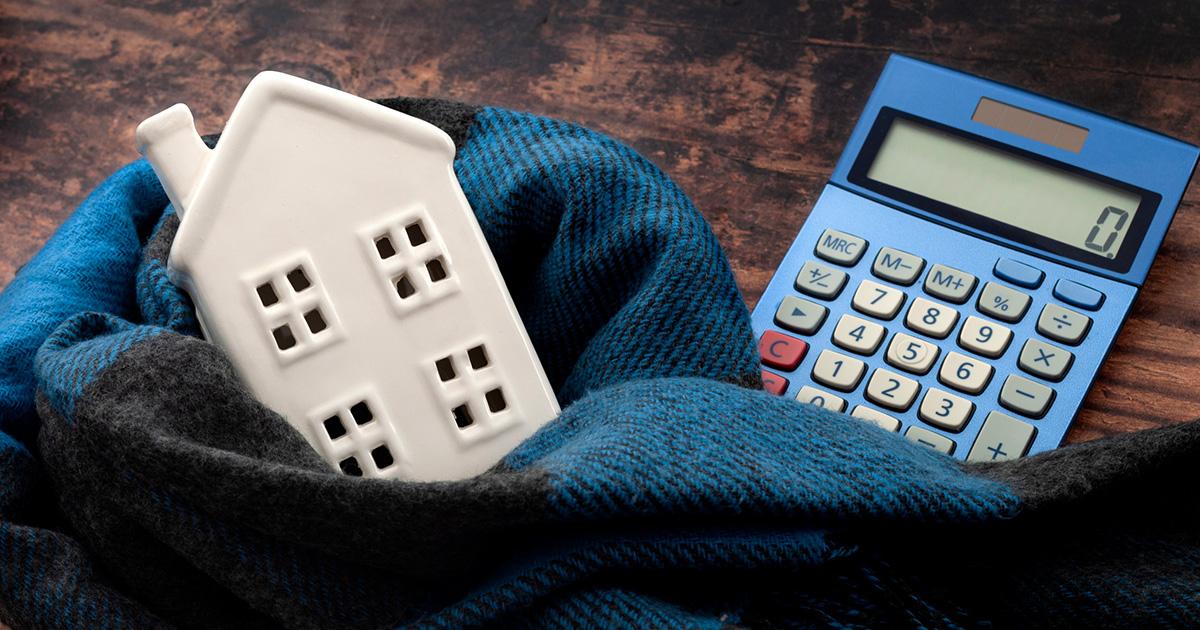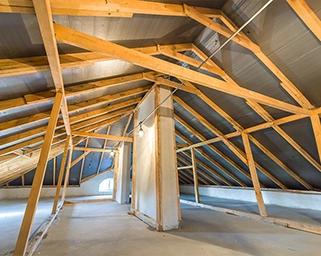What Is a Home Energy Audit and Why Do I Need One?
Discover what a home energy audit entails and how getting one can save you money on your energy bills.
By Anne Fonda
A home energy audit, also known as a home energy assessment or home energy checkup, is an assessment of how energy-efficient your home is. You may have seen at least one of these terms on your electric company’s website.
If you’re interested in saving money on your monthly energy bills, keep reading.
Why should I get an energy audit?
Because you don’t believe in wasting money. A professional home energy audit can identify where heated or cooled air is escaping your home and driving up your energy bills. There is no reason you should be heating or cooling the outside.
A home energy assessment can also identify health and safety issues. Lastly, you receive concrete recommendations for efficiency upgrades. Making your home more energy-efficient can save you money on your energy bills for years to come. Efficient homes are also more comfortable and can give you better control over indoor air quality (IAQ).
When should I get a home energy audit?
There are 3 main times to schedule a home energy assessment, including:
- You have unusually high heating and/or cooling bills.
- You’re getting ready to replace your HVAC system.
- You’re choosing between homes to buy/just bought a new house.

How much does a professional home energy audit cost?
From $0 to several hundred dollars. You may be able to get a basic home energy audit done for free. It may also cost you several hundred dollars – but the recommendations you get can be well worth the cost.
Search for “energy audit near me” and see what results you get. Your electric company may offer them for free or at a reduced price for existing customers. You may want to check out their website. In addition, your state energy office may have a searchable database of approved companies near you. In many areas, AmeriCorps has teams that offer this service for free.
How is an energy audit done?
A home energy audit begins with your scheduling with your chosen energy auditing company or your electric company. There are 3 parts to an energy audit: the assessment, the analysis, and the recommendations.
Assessment
The energy auditor will inspect your home inside and out to evaluate your energy usage and your home’s energy loss.
Your house energy audit should include:
- Explaining the assessment process to you and answering your questions when it is complete.
- Performing a blower door test (air leakage testing) and using infrared camera imaging to show where indoor air is escaping, and outdoor air is entering.
- Analyzing the last 12 months of electric and gas (if applicable) bills to calculate your base energy usage.
- Performing an exterior inspection to check your home’s foundation, walls, windows, roof, and chimney if you have one for cracks or deterioration.
- Checking smoke detectors and carbon monoxide detectors.
- Performing an interior visual inspection of all interior spaces including rooms, closets, the attic, basement, crawl space, utility room, and fireplace if you have one. They may use a camera on a pole to see hard-to-reach spaces such as inside your chimney.
- Inspecting your electrical panel and electrical system for safety issues.
- Inspecting and testing fuel-burning appliances such as gas stoves, furnaces, boilers, and gas water heaters.
- Conducting additional tests or inspections they deem necessary.
Analysis
Once the home assessment is complete, the energy auditor will enter the information they gathered into industry-approved software and perform a data analysis. The data analysis will identify the problems you should address first for the biggest impact on energy efficiency.
Recommendations
The professional energy auditor will then make data-driven recommendations for changes and upgrades to your home and systems to help you achieve higher energy efficiency and stop wasting energy. Bonus: these upgrades should also improve the comfort of your home.
To back up their home improvement recommendations, they should show you the infrared imaging taken during the blower door test so you can see where cold or hot air is entering your home.
The DOE says you can save from 5-30% on your energy bills by implementing the energy-efficient solutions listed in your home energy audit.
Some common recommendations include:
- Air sealing of gaps or cracks around windows, doors, and where plumbing pipes enter your home.
- Add insulation to the attic, crawlspace, or garage.
- Upgrade the electrical wiring or your electrical panel (or both).
- Repair or replace your natural gas furnace, water heater, or stove.
- Replace an older, inefficient HVAC system, possibly with a heat pump system or dual fuel heat pump system.
- Get a smart thermostat.
- Seal leaky ductwork and insulate exposed ductwork in unconditioned areas such as the attic or basement.
- Repair or upgrade to more efficient electric appliances (stove, dishwasher, refrigerator, etc.)
- Switch to LED lightbulbs in all light fixtures.
- Use smart power strips for computers and TVs, and their peripherals.
- Resolve moisture/water vapor issues in the basement or crawl space.
- Repair the roof or chimney.
- Replace drafty doors and windows with more energy-efficient models.
- And more, depending on your home.
If this all sounds like a lot, don’t panic. The IRA has tax credits and heat pump rebates that can help offset the cost of making your home more energy efficient. Start with the energy audit, then insulate and seal around doors and windows to reduce heat loss.
Then replace an aging HVAC system or aging appliances with more energy-efficient units. Variable speed and multi-stage heat pumps are especially efficient when combined with insulation and sealing projects. By reducing energy usage now, you can save on energy costs for years to come.
If your energy audit included a blower door test, especially after any air sealing measures (called a test out), save that information because it will be important for HVAC sizing or HVAC replacement.

Upgrading your HVAC system
According to the U.S. Energy Information Administration, on average, more than half (52% in 2020) of a household’s energy consumption is due to heating and cooling. By upgrading to a more energy-efficient HVAC system, you can realize big cost savings.
As air conditioners, heat pumps, and furnaces age, they become less efficient. Put that efficiency loss together with the fact that systems that are more than 10 years old were less efficient than today’s HVAC equipment, even when they were brand new, and you have a big opportunity to save energy. After all, energy efficiency = reduced energy costs.
Work with an HVAC professional to navigate the HVAC efficiency metrics that are most important in your climate to find a system that works for you. These can include, but are not limited to:
- Seasonal Energy Efficiency Ratio (SEER2)
- Energy Efficiency Ratio (EER2)
- Heating Seasonal Performance Factor (HSPF2)
- Annual Fuel Utilization Efficiency (AFUE)
Consider an electric heat pump system
Electric heat pump technology has improved exponentially in the last 10 years. Industry experts say approximately 85% of American homes can get their heat from a heat pump system alone, while only 15% of Americans live in climates that are too frigid for heat pumps to handle the heating 100% of the time.
For those living in colder climates, a hybrid heat system offers a solution that balances performance with a reduction in carbon emissions. In this system, you pair a heat pump with a gas furnace. The heat pump heats for most of the time and the gas furnace kicks in when the heat pump cannot keep up in colder temperatures. Your system does this automatically.
Read more about the electrification of heat trend and why it’s a win for homeowners and a win for the planet.
Work with the HVAC sustainability experts
At Trane, we are dedicated to a sustainable future and helping our customers reduce their carbon footprints through energy-efficient HVAC systems. We help our customers embrace the electrification of heat and reap the benefits of reduced energy bills.
If you’re thinking about HVAC replacement, work with your local Trane dealer to find the energy-efficient HVAC system that is best suited to your heating and cooling needs, your energy savings goals, and your budget. Remember that a more energy-efficient system may cost more upfront but should save you money on your utility bills in the long run. Federal tax credits and rebates can help offset your upfront cost.
Explore your HVAC financing options and ask if your dealer provides 0% financing.
A Content Writer with Trane Technologies, Anne Fonda researches topics and writes for Trane® and associated residential HVAC brands. She works in collaboration with Trane Technologies subject matter experts, offering easy-to-understand, informative content on complex topics. Her goal is to help consumers make informed decisions on the products and services they need.
She has written for HVAC and other service provider websites for over 16 years. Before transitioning to web content writing, Anne had a 14-year stint as an award-winning journalist. She graduated cum laude from the University of Missouri-Columbia School of Journalism.
When she’s not working, Anne enjoys playing word games, reading, gardening, spending time with family, and visiting gardens and museums.
Expert review by Josef Hejda, Electrification Commercialization Leader
Explore air conditioners
Browse our highly rated SEER2 products to find the perfect one for your home.
Related Articles




